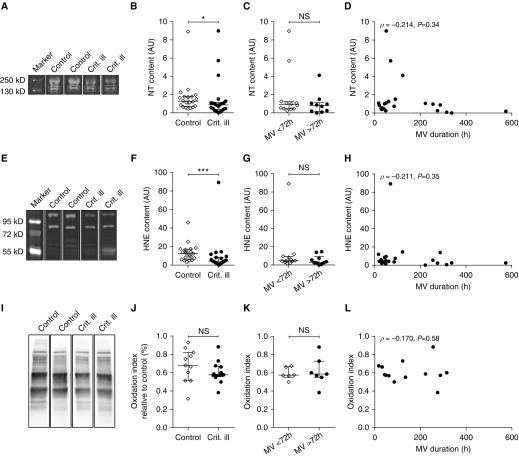Figure 8.
Lower oxidative stress levels in diaphragm muscle fibers from critically ill patients. (A) Typical example of a Western blot stained for nitrosative stress marker nitrotyrosine (NT)-specific antibodies, indicating a footprint of nitrosative stress. (E) Typical example of a Western blot with 4-hydroxy-2-nonenal (HNE)-specific antibodies, a measure for lipid peroxidation. (I) Typical example of an OxyBlot, showing carbonylated proteins. (B, F, and J) NT and HNE contents were lower in diaphragm muscle fibers of critically ill patients than in those of control subjects, whereas the oxidation index was comparable. (C, G, and K) NT content, HNE content, and the oxidation index were not higher in critically ill patients mechanically ventilated for less than 72 hours than in critically ill patients mechanically ventilated longer than 72 hours. (D, H, and L) No correlation between the duration of ventilation and NT content, HNE content, and oxidation index was observed, suggesting that oxidative stress was not an early phenomenon in critically ill patients. Each data point represents the NT content, HNE content, or oxidation index in a diaphragm biopsy of one patient. Data in B, C, F, G, J, and K are presented as median and interquartile range. AU = arbitrary units; Crit. ill = critically ill; MV = mechanical ventilation; NS = not significant. *P ≤ 0.05, ***P ≤ 0.001.

